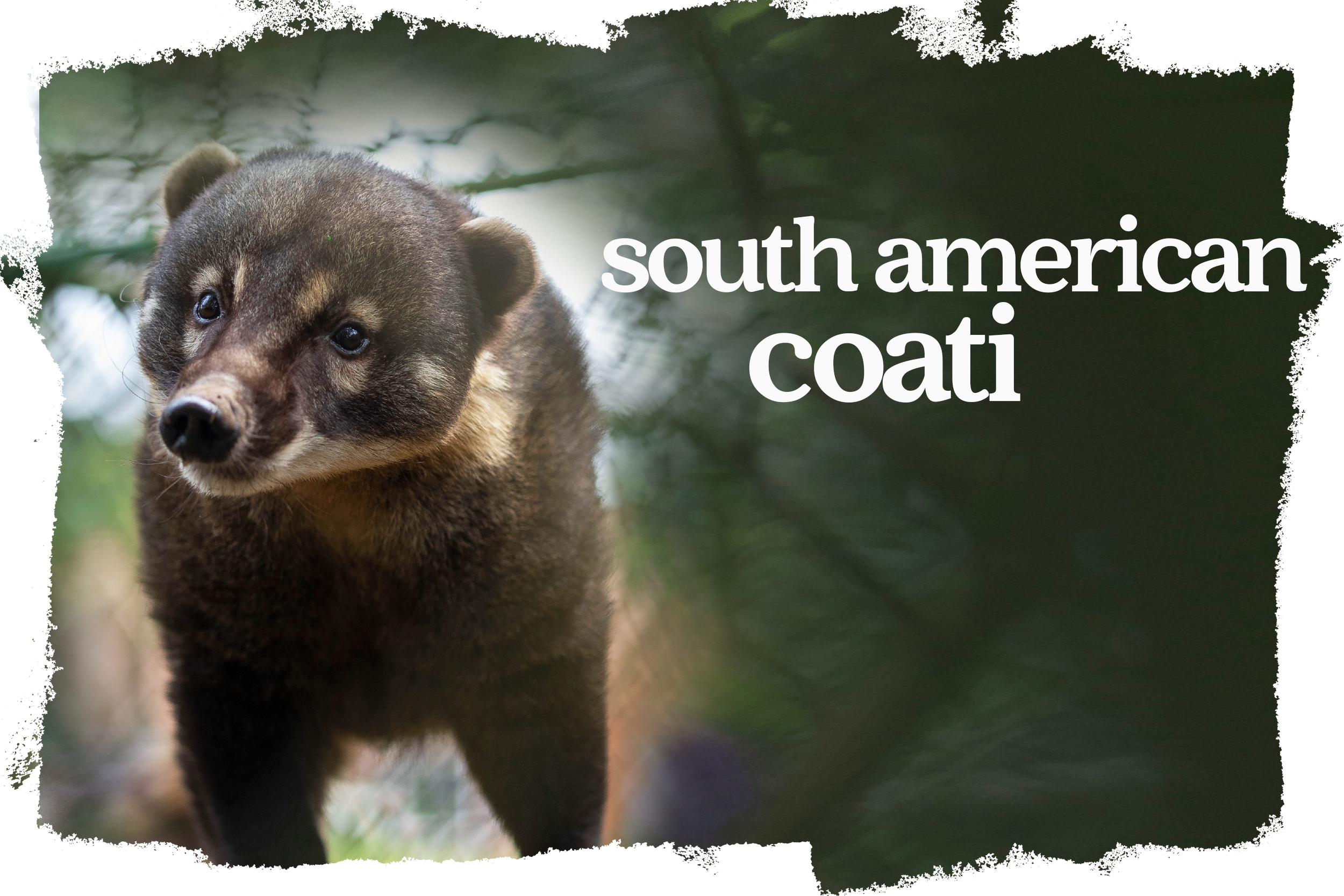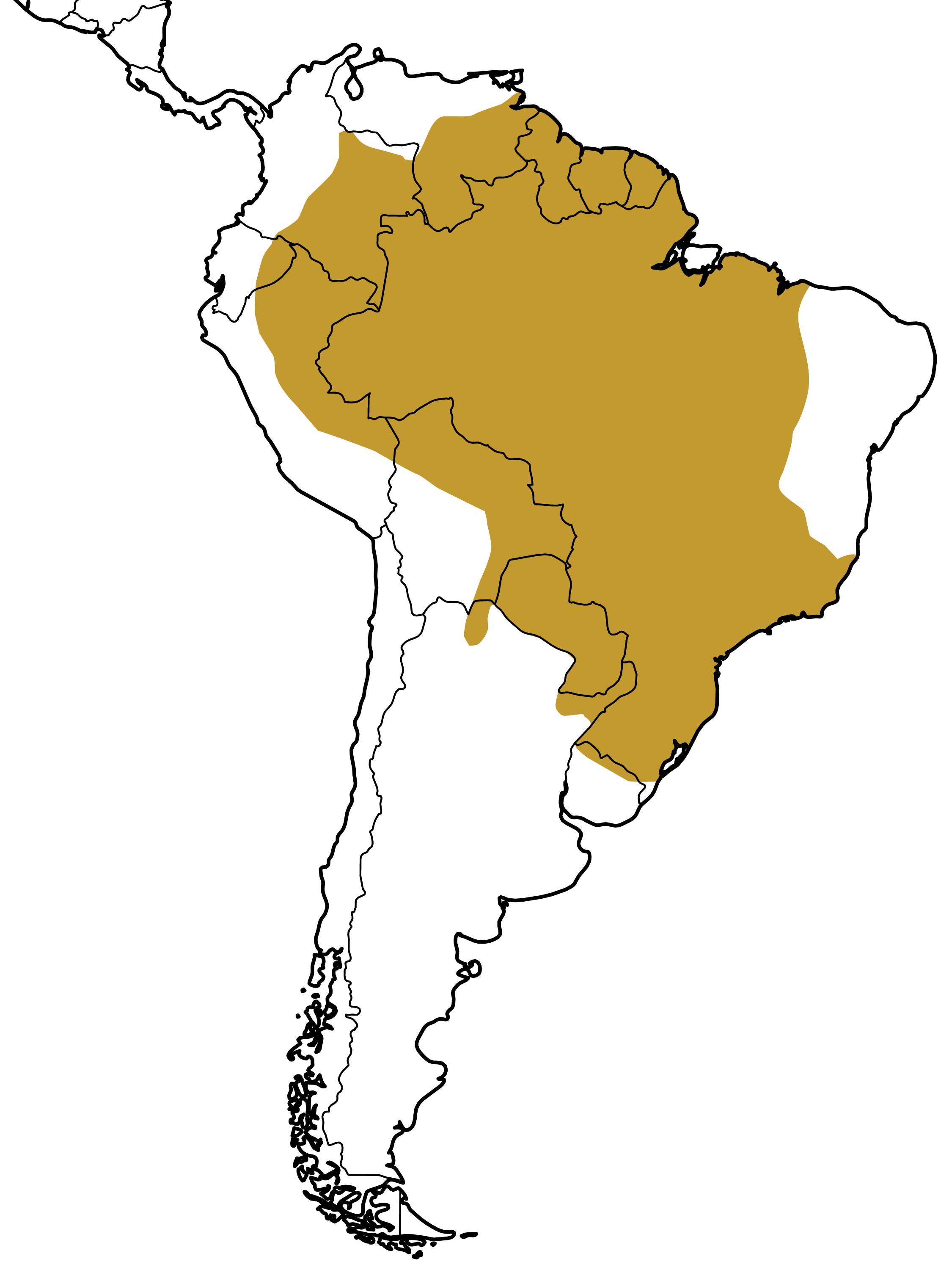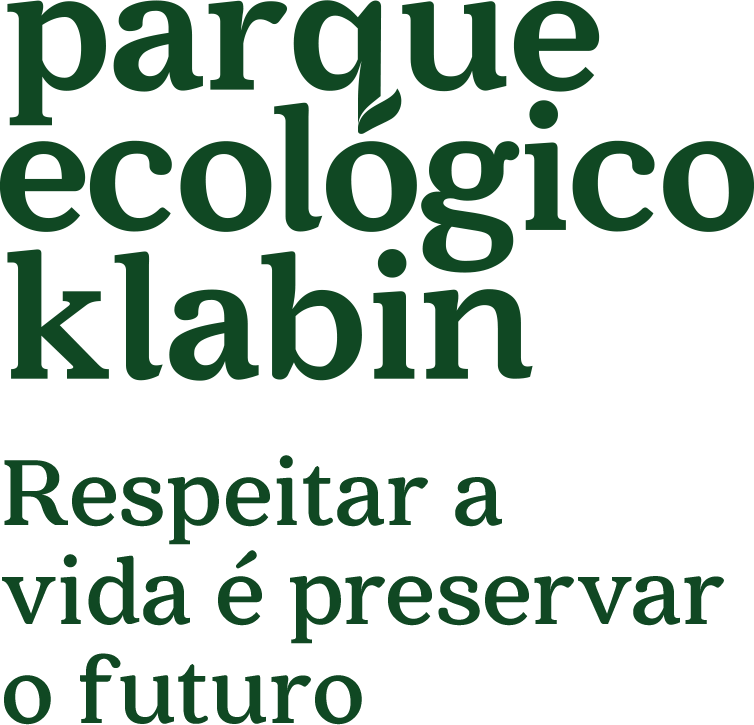south american coati


It is a widely distributed and relatively common species in Brazil, found in the Amazon, Cerrado, Caatinga, Pantanal, Atlantic Forest and Pampas biomes. They are exclusive to South America.
2.7kg to 10kg
body 40cm and 65cm, tail 42cm to 55cm
7 years in the wild
Important data
MAIN FEATURES
The coati is a relative of the raccoon, but with a longer nose and a longer body. It has paws that resemble those of bears, which are very useful for climbing trees. There are some black individuals, others reddish, and others that are gray. It has a black snout and feet, and its tail has up to eight black rings.
TOP THREATS
Habitat loss, being runover, hunting and diseases contracted through contact with domestic animals.
DIET
It eats practically everything, but feeds mainly on earthworms, insects and fruit. Also enjoys eggs, vegetables and lizards.REPRODUCTION
Females choose their partners for breeding. Gestation is up to 76 days and one to seven babies are born.BEHAVIOR
● Females live in groups of four to twenty individuals.
● The coati does not like water, but swims well.
● They sleep in the top of trees, curled up like a ball, and do not get down before dawn.
● The females are diurnal and the males nocturnal.
TRIVIA
Males remain in the group until they are two or three years old, when they are expelled by females.
Geographical distribution





